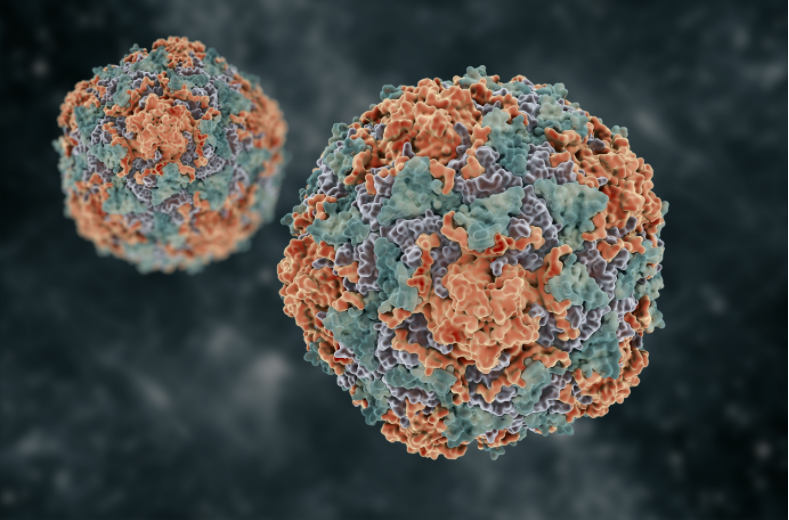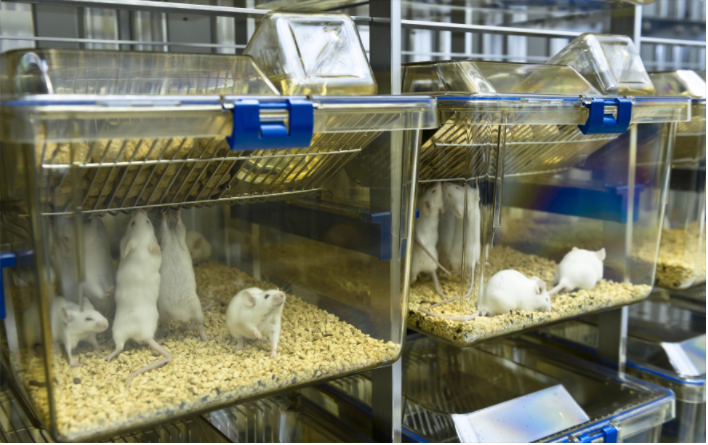Hepatitis B is a potentially deadly liver disease transmitted by the virus of hepatitis B (HBV). Globally, 2 billion people have contracted hepatitis B, according to WHO estimates, and approximately 1.5 million people get hepatitis B each year; the combined figure equals 800,000 deaths annually, largely from liver cirrhosis and hepatocellular carcinoma that occurs later in hepatitis B. The WHO estimates that some 4.5 million premature deaths could be prevented with the vaccine against hepatitis B by 2030. Preventive hepatitis B vaccines do much to avert HBV infection. Therapy vaccines are the best immunotherapies for hepatitis B. The effective hepatitis B vaccines have been created so far in recombinant protein vaccines, DNA vaccines, lipopeptide vaccines and adenovirus-vector vaccines. But no therapeutic hepatitis B vaccine exists for clinical use because the vast majority of recombinant protein and lipopeptide vaccines in use today target only HBsAg as a single target, and cannot induce multi-antigen immunity, so activating hyporeactive specific T cells left in the body. DNA vaccines have a short action time in the body and require the help of effective delivery vehicles to function. It is difficult for a single DNA vaccine to inhibit HBV DNA replication and induce a specific immune response. Although adenovirus-vector vaccines can produce potent levels of CD8+ T cells, it’s unclear how bad this vaccine is for the human body. The vaccine may become less immune-effective if the body produces specific antibodies to adenovirus upon vaccination. Therefore, the search for alternative technical pathways for therapeutic hepatitis B vaccines remains urgent.
While current evidence-based applications of preventive hepatitis B vaccine in HBsAg-cleared populations has demonstrated its safety and efficacy, larger, multi-center trials are far from being completed. When it comes to HBV, scientists have developed companion in vivo and in vitro models of HBV that meet the needs of their respective research objectives. Although flawed in many ways, these models have helped individuals to gain a better understanding of HBV and assisted in the creation and testing of novel medications to prevent and treat HBV.
HBV Animal Models
Non-human primate model
Non-human primates, including chimpanzees, gibbons and baboons, are susceptible to HBV infection. These vulnerable animals can be used to investigate the viability, natural infection and pathogenesis of HBV and the body’s immune clearance of the virus. However, there are limiting factors such as mild degree of virus infection, animal ethics and species endangerment. In order to establish animal models similar to HBV natural infection in humans, researchers have never stopped exploratory research on the macaques. These exploratory animal models play an important role in studying the mechanism of HBV infection and the host’s immune response during infection, but the scale is extremely limited and there is a lack of more confirmatory experiments on HBV infection.
Tree shrew model
Tree shrews are an animal model discovered after the above-mentioned primates that can be easily infected by HBV. After infection with HBV, they will experience temporary viremia, virus clearance process, and HBsAg seroconversion. The infection process is similar to that of humans, with a short infection cycle (about 40 days). In this type of model, tree shrews are mostly captured in the wild. The infection situation is related to the animal’s age, breed, HBV genotype, etc., and there is currently a lack of specific detection of hepatitis B antibodies for it, so the reliability, controllability, repeatability of this model and the test results are still controversial.
Mice model
Currently, the most commonly used hepatitis B animal model is mice, but HBV cannot directly infect mice. It’s easy to classify mature mouse models of HBV infection into two main types: the chimeric mouse model, and the most common genetically deficient mouse model. These mouse models are susceptible to HBV infection and are mostly used to study the immune response, virus replication, virus pathogenesis, etc. HBV infection) and to screen and test anti-HBV medications. However, they have shortcomings such as low reproduction rate and high mortality rate, slow process of HBV infection and certain immune tolerance to the virus. The other type is a transgenic mouse model, which includes two types: HBV expressing and NTCP (Na+-Taurocholate cotransporting polypeptide) deficiency transgenic mouse, with the former being the most used. This type of model plays an important role in studying HBV replication and evaluating anti-HBV drugs and vaccines. However, there are defects that HBV is not naturally infected and viral RNA comes from the integrated HBV genome. Therefore, it cannot be used to study early viral infection and viral infection. Mechanism, and is not suitable for studying mechanisms that affect cccDNA regulation and transcription activity and evaluating the pharmacodynamic effects of drugs on cccDNA production.
Woodchuck hepatitis virus (WHV) infection model
HBV is part of the Hepadnavirus family, and is subdivided into the orthohepadnaviruses and avihepadnaviruses. Beyond human HBV (receptive to human and non-human primates), the most identifiable, and widely distributed, member of the orthohevivirus genus is woodchuck hepatitis B virus (WHV). The adult woodchuck model established using WHV is mainly used to study the process of clearing infected cells by the body during acute virus infection, the mechanism of chronic infection and cancer, and to evaluate anti-HBV drugs and vaccines. However, due to differences in genetic background, the conclusions drawn from this model cannot fully reflect the status of HBV in the human body. In addition, insufficient purification of the WHV strain, incomplete antibody sets to study immune responses, and high animal prices remain bottlenecks that restrict the widespread use of this model.
Duck hepatitis B virus (DHBV) infection model
Duck hepatitis B virus (DHBV) is more commonly used in the avian hepatitis virus genus. At present, DHBV is mainly used to infect 1-3-day-old ducks for modeling research. This model can be used to evaluate new anti-HBV drugs and study cell surface virus receptors and virus clearance mechanisms. Compared with other types of models, the DHBV animal model has the following advantages: (1) The model is easy to obtain: compared with mammals, ducks have a wider source, simpler breeding conditions, shorter breeding cycles, and DHBV will not infect humans and have safer characteristics; (2) High infection success rate: Although there are differences in the natural infection rates among different duck species, different duck species have no obvious effect on the artificial infection rate. Intravenous injection has a higher infection rate than intraperitoneal injection; (3) The virus replication mechanism is similar: the replication mechanism of DHBV is highly consistent with HBV. Unlike transgenic animal models, the virus in DHBV-infected ducks can self-replicate and can spread vertically; (4) Liver pathological damage can occur: DHBV animal models can continue to express DHBV DNA highly within a certain period of time, and can cause pathological damage to the liver, which is the main difference from HBV full-genome transgenic mice. The flaw with this model is that ducks and humans differ in species, HBV and DHBV differ in structure, and there are many variables which impact the stability of the model, such as duck species, age, source of virus, batch, route of infection etc.
Testing Vaccine Effectiveness in Animal Models
Evaluation of HBV vaccine efficacy in animal models is a complicated process, including animal model selection, immunization routes and doses, and immunogenicity and protection of the vaccine.
Choice of the animal model: First, an animal model should be chosen considering the vaccine target pathogen and the anticipated immune response.
Work out the immunization route and dose: Experiment on the best immunization route and dose. For instance, antibody titters to HBV are analyzed using ELISA to determine the most effective route and dose of immunization.
Immunogeneity measurement: Immunogeneity measurement is done by counting the number of antibodies made in the animal. For instance, a vaccine is judged to be immunogenic by measuring serum antibody concentrations.
Test the vaccine’s safety: The safety of the vaccine is measured using challenge tests. For example, the protective effect of the vaccine is determined by comparing the differences in clinical symptoms, pathological changes, relative daily weight gain, pathogen nucleic acid load, etc. between the vaccinated group and the control group after challenge.
The application of animal models is also reflected in the optimization of vaccine research and development strategies. Through experiments on different animal models, researchers can explore different vaccine formulations, vaccination routes and adjuvants to improve the effectiveness and safety of vaccines. The ideal HBV animal model should be an economical, practical and easy-to-standardize animal model that has close kinship with humans, has a high infection rate for human HBV, has a long maintenance time, and can cause corresponding pathological changes after infection. It is best to have a normal immune system at the same time to facilitate evaluation of immune responses. Although great progress has been made in the research and application of HBV experimental animal models and made outstanding contributions to HBV-related research, so far there is no HBV animal model that meets all the above conditions at the same time. In addition, because the source of human liver tissue samples is very limited and it is difficult to meet relevant experimental research, HBV animal models are still the only effective means to explore and understand the pathogenesis and treatment methods of chronic hepatitis B. At present, researchers can select relatively suitable animal models of HBV infection or replication among the above models for experimental research based on the specific research content.
Our hepatitis virus animal models and related services:
References
- Jose-Abrego, Alexis, et al. Host and HBV interactions and their potential impact on clinical outcomes. Pathogens. 12.9 (2023): 1146.
- Menne, Stephan, and Paul J. Cote. The woodchuck as an animal model for pathogenesis and therapy of chronic hepatitis B virus infection. World journal of gastroenterology: WJG. 13.1 (2007): 104.
- Hu, Jianming, et al. Cell and animal models for studying hepatitis B virus infection and drug development. Gastroenterology. 156.2 (2019): 338-354.
- Guo, Wei-Na, et al. Animal models for the study of hepatitis B virus infection. Zoological research. 39.1 (2018): 25.
- Liu, Yongzhen, Stephanie Maya, and Alexander Ploss. Animal models of hepatitis B virus infection–success, challenges, and future directions. Viruses. 13.5 (2021): 777.


